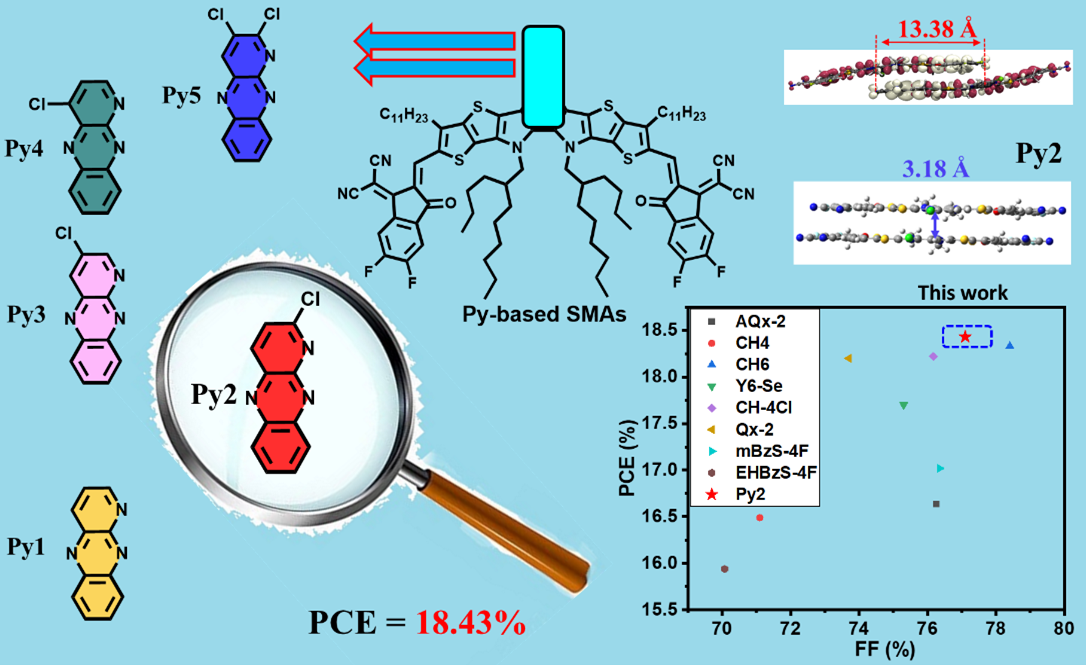The current high-efficiency A-DA1D-A-typed small-molecule acceptor (SMA) system is mainly dominated by side-chain modifications, while the principles governing the efficient design of SMAs with different alkyl chains remain elusive, leading to a trial-and-error scenario. Meanwhile, the central core of A-DA1D-A-typed SMAs, which is the most critical factor determining the efficiency of OSCs, has received less attention, particularly regarding the electron-deficient A1units of the central core. Importantly, since various electron-deficient A1units will cause large differences in the SMA structure, the scientific reasons behind the high efficiency of the A-DA1D-A configuration acceptors can be deeply understood through research on central electron-deficient units.

In view of this, the team of Professor Chuluo Yang and Professor Xiaosong Cao from Shenzhen University developed a series of SMAs withpyrido[2,3-b]quinoxaline (PyQx)as new electron-deficient unit by combining with the strategy of cascade chlorination, namely Py1, Py2, Py3, Py4 and Py5,and systematically investigated the influence of the position(ortho,metaandpatapositions of the N atom in the pyridine)and number (ranging from 0 to 2) of chlorine atoms in PyQx on the physicochemical properties, molecular packing and device performance of SMAs. In general, the introduction of chlorine atoms reduces the intramolecular charge transfer effects but elevates the LUMO energy levels. The binary organic solar cells (OSCs) based on PM1:Py2 yields a PCE of 18.43%, significantly higher than those based on PM1:Py1 (11.78%), PM1:Py3 (16.15%), PM1:Py4 (7.40%) and PM1:Py5 (15.87%). Importantly, density functional theory(DFT) reveals that Py2 with ortho chlorine substituted PyQx and Py5 with two chlorine atoms yield larger dipole moments and smaller π∙∙∙π stacking distances between two end groups, as compared with the other three acceptors. Moreover, Py2 shows the strongest light absorption capability induced byextendedorbitoverlap lengthsand more efficient packing structuresin the dimers. These features endow the best device performance of Py2 with high fill factor (FF) and short-circuit current density (JSC).
Recently, a research paper titled "High-Performance Organic Solar Cells Containing Pyrido[2,3-b]quinoxaline-Core-Based Small-Molecule Acceptors with Optimized Orbit Overlap Lengths and Molecular Packing" was published online on May 26, 2023, in the prestigious chemistry journal Angewandte Chemie international Edition. This work received strong support from the National Natural Science Foundation of China, and the Shenzhen Municipal Science and Technology Innovation Committee. Please refer to the following link for the full text:https://onlinelibrary.wiley.com/doi/10.1002/anie.202304127.
